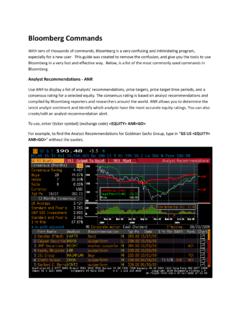Transcription of Real Finnish Lessons - cps.org.uk
1 Centre for Policy StudiesReal Finnish LessonsThe true story of an education superpowerGABRIEL HELLER SAHLGRENWITH A FOREWORD BY PROFESSOR JULIAN LE GRANDC entre for Policy StudiesREAL Finnish LESSONSGABRIEL HELLER SAHLGRENS ince Finland s top ranking in the fi rst international PISA league tables in 2001, policymakers from around the world have tried to learn from the unexpected and extraordinary success of its education did Finland s pupils do so well? Popular explanations include the country s focus on equity, the high standard of teacher training, a comparatively low workload, and the lack of market reforms and school accountability. But research does not support any of these conclusions.
2 In fact, Finland s rise began well before most of these policies were able to take eff ect and its recent decline started soon after they took , Finland s success appears to be the result of deep-rooted historical, socio-economic and cultural factors, combined with a resistance to the rising global tide of progressive teaching methods. Its current fall can in turn be linked to cultural changes and recent reforms which may have undermined the causes of its achievements. The fi ndings of this monograph shed new light on Finland s educational performance and provide important Lessons for Real Finnish Lessons The true story of an education superpower GABRIEL HELLER SAHLGREN WITH A FOREWORD BY PROFESSOR JULIAN LE GRAND THE AUTHOR Gabriel Heller Sahlgren is research director at the Centre for the Study of Market Reform of Education (CMRE), an affiliated research fellow at the Research Institute of Industrial Economics in Stockholm, Sweden, and a PhD student at the London School of Economics.
3 He is the author of numerous publications on issues relating to applied microeconomics, including Incentivising Excellence: School Choice and Education Quality (CMRE and IEA 2013). Acknowledgements The author thanks Charlotte Fox, Jonathan Friedman, Henrik Jordahl, Sirkku Kupiainen, Neil McIntosh, Tim Oates, and (especially) Tino Sanandaji for helpful comments and suggestions. This monograph is the winner of the 2014 Charles Douglas-Home Memorial Trust Award, an annual prize established to promote the ideals of freedom and democracy. Support towards research for this report was given by the Institute for Policy Research. ISBN No. 978-1-910627-08-2 Centre for Policy Studies, April 2015 Printed by 4 Print, 138 Molesey Avenue, Surrey i CONTENTS Summary Foreword 1.
4 Introduction 1 2. From Poster Child to Ominous Slippage 4 3. Questioning the Fashionable Policy Explanations 7 4. The Iron Cage of History 18 5. The Times They Are A-Changin 49 6. Lessons from Finland? 63 Endnotes ii SUMMARY In the first international PISA league tables, published by the OECD in 2001, Finland achieved top positions in mathematical, reading, and scientific literacy. Since then, policymakers from around the world have tried to learn from its extraordinary and unexpected success. However, Finnish scores in all domains slipped in PISA 2009, and to an even greater degree in PISA 2012. Why did Finland achieve such success in PISA? The standard policy explanations for the country s rise include its focus on equity, with the comprehensive school reform of the 1970s as the bedrock, and the absence of standardised tests, accountability, and market reforms.
5 Other explanations highlight comparatively little school- and homework, and the country s current teacher education system. Yet there is little hard evidence for any of the standard explanations in fact, most research explicitly does not support them. iii Furthermore, a closer examination of Finland s results over time reveals that its rise began well before most of the highlighted policies were able to take effect. For example, the lack of accountability and the high level of autonomy for schools and teachers are recent phenomena. Up until the 1990s, the Finnish education system was centralised and had little autonomy. Finland s complicated and unique history appears to be an important explanation for its educational success, not least via the high social status and quality of teachers.
6 This dates back to their distinctive role in the nation-building process, beginning in the 19th century, and is therefore unlikely to be caused by current policies. Finland was also a comparatively late developer in terms of industrialisation, economic growth, rollout of mass education, and development of a welfare state. As a result, Finnish culture for long remained more traditional than in other Nordic countries, reflecting its similarities with high-performing East Asian nations. This is likely to have underpinned the country s improvements in international tests via a wealth effect , which first increases and later decreases educational performance as a function of income. In education, the special socio-economic and cultural trajectory meant that a hierarchical and traditional schooling climate remained largely in place until relatively recently.
7 Perhaps most conspicuous, pupil-led teaching methods were for long absent from Finnish classrooms, despite admonishments from the educational establishment. Incidentally, an increasing body of research suggests that traditional methods are superior for raising pupil achievement. iv The recent fall in performance may in part be explained by the fact that many of the above preconditions for success are now being eroded. The country s culture is catching up with the radical economic transformation that took place in the second half of the 20th century. In particular, the traditional and teacher-centred educational culture is being replaced by more pupil-led ways of working. While a degree of caution in seeking Lessons from Finland s success is always necessary, the in-depth analysis in this monograph shows that existing popular explanations for the country s achievements, such as its lack of market reforms and accountability, do not withstand scrutiny.
8 Instead, it suggests that the country s rise was to a large extent shaped by socio-economic and historical factors, as well as the retention of a traditional educational culture. v FOREWORD For the last decade or so, Finland s education system has been a poster child for many education experts and policymakers throughout the world. This reputation stems from the country s outstanding performance in international tests in the early part of this century. In consecutive PISA studies, Finland achieved top positions in literacy, numeracy, and science, rivalling even the East Asian tigers in overall performance. Consequently, the Finnish education model went from obscurity to world famous within only a few years.
9 Perhaps most remarkable was the fact that Finland was seemingly able to achieve the excellent results without resorting to the draconian education model that has been the trademark of East Asia. Similarly, it also appeared to have spurned many of the market and accountability reforms undertaken in its Scandinavian neighbours, the United Kingdom, and elsewhere. All this made Finland an especially attractive model for opponents of some of the major trends in education policy worldwide. However, the country s performance has begun to falter in the last couple of years in both absolute and relative terms. Proponents vi of the traditional explanations for the Finnish success appear either to ignore the on-going decline or to come up with ad hoc arguments in an attempt to save their original ones.
10 Yet the main problem with the traditional explanations of the Finnish education miracle was that they originated from the idea of best practice , an approach that highlights current arrangements in high-performing countries as the key determinant without adequate consideration of whether these are causally linked to performance. Consequently, the policy Lessons drawn from this approach are not particularly reliable and might in fact do more harm than good. So, while many have used Finland s experience to support their own pet theories on the desirability of certain types of education, its rise and decline have never been systematically analysed in a rigorous fashion. In this masterly exploration of the Finnish phenomenon, Gabriel Heller Sahlgren remedies this situation.




